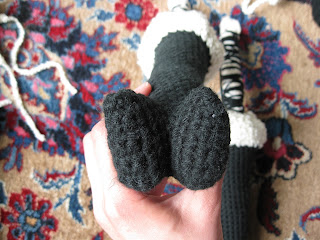Okay, into the world of papery goodness!
The most important thing to understand is that paper is made... and just because there is a type of paper that you want, doesn't mean that someone makes it. This unfortunate fact is important because you tend to go out and buy paper once you have a project designed and not design your project based on what is available (or how much it might cost to get something 'special'). Most people go get paper for invitations. In most basic design, invitations/cards have two parts: envelope and card. If you want these things to be of the same color/same finish of paper, then it means that you are buying your envelope and insides from the same line of paper.
The implication of buying these two parts from the same line of paper means that there is both a heavyweight paper (the card stock for your invitation) and then a lightweight paper (which the envelope is made out of). Interestingly, most commercial papers only come in a card stock weight for textured paper and colors other than white/cream. Only a few specialty paper makers give more options (see footnotes).
When you go to buy paper for printing, as opposed to paper for art or crafting, you will see certain terms. Card stock paper is called 'Cover'. The lighter weight paper is called 'Text'. There is another type called 'Writing' and this weight is the thinnest, generally used for office printing and it is not substantial enough to use for events and nicer occasions.
When you are looking at these papers, you will also see weights, like 80 lb. Cover. All papers will give you a physical weight, or description of thickness, besides cover/text/writing. In the USA, you generally get the poundage. Art papers and European/Japanese papers will normally give you a GSM weight, which is grams per square meter. This literally means how much a square meter of the paper weighs. The other measurement is a calliper thickness. This is kind of helpful because you are given the thickness in a standard measurement (in points) but, if the paper has been pressed in a roller, it could be much sturdier than a paper of the same calliper thickness which was left unpressed and spongy.
The hard part about the American pound measurements is that the poundage is telling you the weight of a parent sheet of paper. When commercial paper is made, it is first on a massive roll, then that roll is cut down (maybe a few times) into what is called 'parent sheets', and then these parent sheets get cut down (normally by paper distributors and not the manufactures) into smaller sheets for resale and printing. Unfortunately, there is no standardization on sizing for parent sheets. This means that an 100 lb. Cover from one brand can be much lighter in weight than one from another brand. Also, there are 80 lb. Covers and 80 lb. Texts... in the same paper line.... and one is the card stock and one is the lightweight.
Ultimately, you need to physically go and feel the papers or get samples of them if you really want to know what you are getting.
I know that this post is going to be the first of many, going deeper and deeper into the world of commercial and art papers. Hopefully, this will just help some of the words and numbers make sense as you stand in a paper store. Much more to come on all of this... try to contain your excitement.
My favorite maker and supplier of commercial paper is French Paper Company. Granted, I do not use them for basic whites and creams, but if I want something interesting, this is who I use. All of their papers come in multiple weights, sizes, envelopes, it is all of excellent quality, and massive comparative value for what you are getting. Plus some hysterical gift wrap. I honestly have nothing but praise for their products. And I am mostly snark, so this admiration is huge for me.


















































